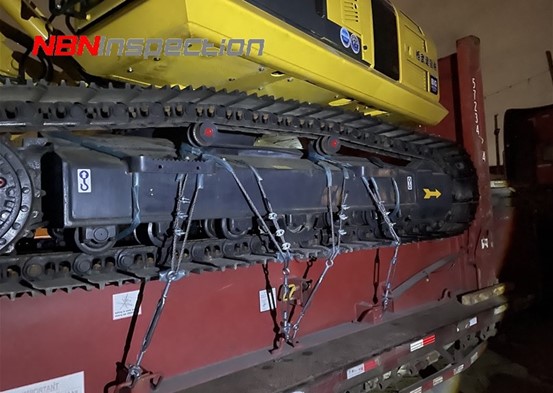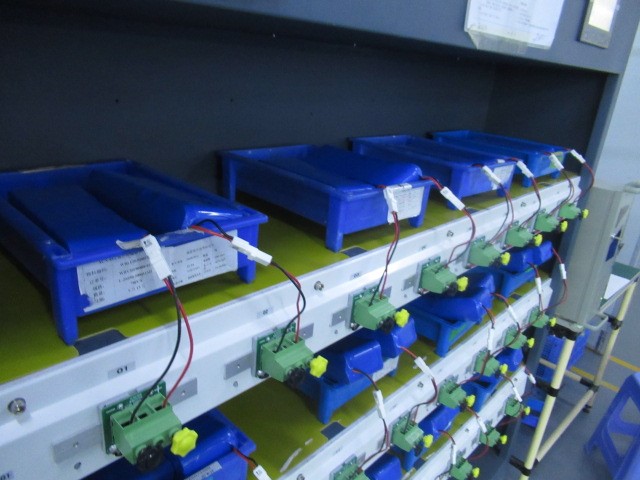
Container loading supervision is a critical process to ensure the safe transportation of used construction machinery via ocean freight. Proper loading techniques are essential to prevent damages, reduce the risk of accidents, and maximize container space utilization. Additionally, container loading supervision plays a vital role in safeguarding the integrity of the cargo, ensuring that the correct goods are delivered to the freight forwarder and avoiding any fraudulent activities by suppliers. In this article, we will explore the comprehensive process of Container Loading Supervision for second-hand construction machinery and its significance in preventing fraud and ensuring cargo security.

Contents
I. Container Loading Supervision Process
1.Pre-loading Assessment:
The container loading supervision process begins with a pre-loading assessment. A team of experts from an inspection and quality control company, such as NBNQC, examines the used construction machinery to check for damages, missing components, and any other potential issues that need to be addressed before loading.
2.Developing a Loading Plan:
Based on the dimensions and weight of the machinery, a detailed loading plan is developed. This plan outlines the positioning of each piece of equipment inside the container, considering the balance, weight distribution, and securing methods to prevent any damages during transit.
3.Selection of Appropriate Containers:
Choosing the right type of container is crucial to safeguard the machinery during ocean freight. Standard dry containers are suitable for smaller machinery, while flat racks or open-top containers are used for larger and more cumbersome equipment.
4.Securing Equipment and Accessories:
Before loading, all removable parts and accessories are secured, or if feasible, disassembled. This not only prevents damage during transit but also reduces the risk of theft or tampering.
5.Equipment Positioning and Securing:
The used construction machinery is carefully positioned inside the container following the pre-determined loading plan. It is then securely fastened using straps, chains, or other appropriate fastening devices to prevent any movement during transit.
6.Fillers and Cushioning:
To avoid any gaps and enhance stability, fillers and cushioning materials such as foam, wooden blocks, or airbags are used. These materials prevent shifting and minimize the risk of impacts during transportation.
7.Inspection and Final Checks:
Once the loading is completed, a thorough inspection is conducted to ensure that all machinery is properly secured and that the container’s weight distribution is balanced. Any necessary adjustments or additional measures are taken at this stage.
II. Preventing Fraud and Ensuring Cargo Security
1.Maintaining Chain of Custody:
Container loading supervision ensures a clear chain of custody, from the initial inspection of the used construction machinery to the final loading and delivery to the freight forwarder. This documentation helps prevent any unauthorized access or tampering of the cargo.
2.Independent Verification:
By involving a third-party inspection and quality control company like NBNQC, the authenticity and condition of the used construction machinery are independently verified. This minimizes the risk of fraudulent activities and unauthorized substitutions by suppliers.
3.Secure Sealing:
Upon completion of the container loading, the container is securely sealed with tamper-evident seals. These seals provide evidence of any unauthorized access to the cargo, making it difficult for dishonest suppliers to switch or manipulate the goods.
4.Documentation and Records:
Comprehensive documentation and records of the container loading process, including photographs and inspection reports, are maintained. This information serves as valuable evidence in case of any disputes or fraudulent claims.
5.Monitoring and Tracking:
Throughout the container loading and transportation process, the cargo’s status is closely monitored and tracked. This real-time monitoring helps identify any deviations from the original plan and allows for timely intervention if needed.
III. Ensuring Correct Cargo Handover to Freight Forwarder
1.Verification of Goods:
Container loading supervision includes verifying the used construction machinery against the provided packing list and shipment details. This ensures that the correct items are being loaded into the container as per the agreement with the supplier.
2.Cross-Checking Documentation:
All relevant shipping documents, such as invoices, packing lists, and bills of lading, are cross-checked to confirm that they match the actual cargo being loaded.
3.Freight Forwarder Coordination:
The container loading supervision team coordinates with the freight forwarder to ensure a seamless handover of the cargo. This collaboration helps avoid any confusion or delays in cargo delivery.
4.Seal Verification:
Before the container is sealed, the integrity of the tamper-evident seals is verified by both the container loading supervision team and the freight forwarder. This joint inspection further ensures the security of the cargo.
Conclusion
Container loading supervision is a comprehensive process that plays a vital role in ensuring the safe transportation of used construction machinery via ocean freight. It not only prevents damages during transit but also safeguards the integrity of the cargo, ensuring that the correct goods are delivered to the freight forwarder and avoiding fraudulent activities by suppliers. By adhering to stringent inspection protocols, maintaining a clear chain of custody, and closely collaborating with the freight forwarder, container loading supervision helps maintain cargo security and fosters trust between suppliers and buyers in the global market. NBNQC and similar quality control companies continue to be essential partners in the international shipment of used construction machinery, safeguarding businesses from potential losses due to cargo damage or fraud.




